Questioning Authority: The Early Years
The years passed and I grew to be a young man. I had a very close group of friends in the youth movement (Hashomer Hatzair) and was close to my older sister. I loved sports, hiking, backpacking, swimming, and basketball, but was also a keen reader of many subjects. In the course of absorbing so much new information and so many new ideas, I soon found I had a passion for critical thinking and its natural consequence: a desire to improve the society I lived in and to question existing ‘truths’ and unquestioned/given assumptions. Alongside my family and friends, I was politically active in promoting peaceful co-existence between Israelis and Palestinians and in opposing religious oppression and manipulation by the extremist religious Jews….and it all began at our dinner table where Martin Buber, Rollo May, and other existentialists were part of the menu.
A thirst for knowledge blossomed in me
Like a bud growing in springtime,
poking through the newly thawed soil
An examination of life, a proclivity
to challenge rigid dogmas and assumptions
Like an ember that slowly simmered
My quest to question the unquestioned began

I was her
Sheriff of Tiran Island – Reversing Day & Night
Thinking back to my growing-up years, and including my military service, I can clearly trace the emergence of my fascination with all kinds of boundaries. A striking early example was when, as a young officer, I served on the remote, barren, but intriguing, Tiran Island, a strategic ‘bare giant rock’ in the Red Sea. My soldiers often referred to me as the “Sheriff of Tiran,” a title they painted on my small wooden ‘home.’ Besides taking care of the basic military duties, I spent much of my time wandering alone around this lifeless speck in the sea with my bare feet, a diving knife strips to my calf and a bathing suit and diving with friendly sharks and huge sea turtles. I found the island to have a profound and complex, spiritual nature. At that time, I was musing about the boundaries between day and night and wondered whether the distinct extreme separation of day and night is an artificial construct created by humans and their ancient cultures, or is it an inherent part of human nature. To satisfy my curiosity – and to the profound dismay of my soldiers – I experimented with inverting day and night by reversing our daily routines and the customary way of life of most humans and many animals living currently on the planet by ordering my soldiers (I was the only officer and highest ranking soldier on the island) to sleep during the day, eat breakfast at sunset, lunch at midnight and dinner at sunrise. While I was quite engrossed by my unorthodox research and the exploration of the nature of Man, I also noticed the resistance and outrage of my soldiers who perceived the experiment as seriously deviant. While not always popular, my questioning ‘common knowledge’ and our immemorial ways of living has been large part of my life story.
Exploring various social constructs
Night becomes day
A reversal of established norms
Questioning the order of things
A curiosity, welled up within me
A quest, an intellectual adventure
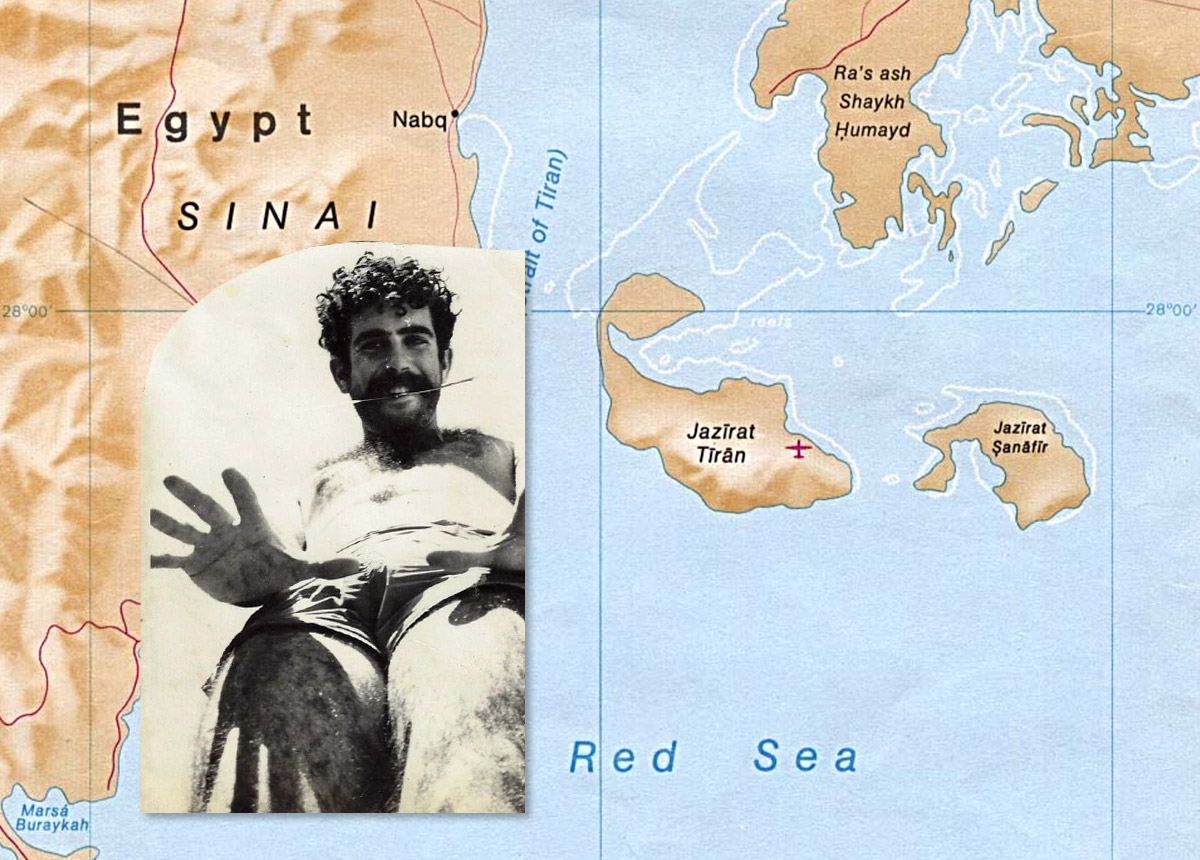

‘Kilometers Sex Chasers’ & ‘Hopeful Miles’
We were housed in a ‘quiet’ military base in the Arava desert area, by the Jordanian border, where Israeli male and female soldiers served alongside each other. It was 1970, I was a lieutenant and 2nd in command of the base and became good friends with Miri, (not her real name) an intelligent, gorgeous female soldier who was being consistently pursued by men of all ranks on the base. We developed a deep and fun relationship discussing how men were looking at her, making comments, inviting, suggesting, reaching out and touching her inappropriately.
As our friendship deepened, she shared with me the various ‘games’ she had been playing, in fact, toying with the male soldiers who pursued her. When they offered to take her for a spin in the desert in their Jeeps or other macho military vehicle, she would keep track of how far they each drove before they began to sexually pursue her until they finally, disappointedly, gave up, turned around, and drove back to the base. She described in rich detail how some started with sweet talking, while others reached straight for her breasts. Some pretended to be interested in her philosophy of life while others took a short cut straight to her crotch. We discussed the pursuers’ strategies and embellished it with fun mathematical (miles) precision.
We established a practice where she would record the vehicle odometer as soon as she entered the vehicle with any ‘hopeful pursuer,’ and then again when they returned to base. In our bemused conversations we ranked the soldiers and officers by their ‘hopeful miles’, i.e., how far they drove the vehicle before they gave up and turned back.
- The shortest distancers, most impatient ones, were nicknamed ‘the 5 kilometer (3 miles) impatient chasers’. Obviously, these were highly entitled and impatient men who were generally on the crude side.
- We named the next level ‘the 20 kilometers (13 miles) pretenders.’ They would take more time to drive and more effort to seduce her than the first group before they realized the futility of their aspirations.
- The most ‘persistent’ few were crowned ‘the 50 kilometer (30 miles) determined pursuers.’ This group drove 30 miles, some even off roads, before they gave up and turned back. These 30 mile insistent pursuers sometimes read her poetry, confessed their longtime attraction to her, and romantically pointed at the stars, moon, mountains or an occasional nocturnal desert animal. Their patience generally wore off at 20 miles and poetry would often shift to an aggressive sexual touch around mile 25 to 30.
Obviously, we paid careful attention to her physical safety in these ‘adventures’, primarily by sorting out ahead of time who she agreed to run the ‘miles experiment’ on. She also had her own small military radio on her (in that pre-cellphone era) where she could, if necessary, directly connect with me and I could track her physical location.
She never had sex with any of the hopeful pursuers. It was a game that some may legitimately claim was unfair, unkind, manipulative or even cruel… It may come as no surprise to some that she and I never physically sexualized our friendship. Obviously, our measuring games, ranking the officers and soldiers by their hopeful miles and follow up conversations were rather sexy in and of themselves. In fact, one may say, it was as sexy as traditional sex… if not even more…
Discovering the Power of Women on the Male Psyche
As we were waiting to be deployed in the 1973 (Yom Kippur) war, I noticed that almost all my fellow officers were impatient to engage in battle even though it was clear that doing so was likely to result in high casualties to our unit – and, of course, to ourselves. In fact, some men even tried to exert influence on the high command to get us deployed. Believing that the war could have been prevented, I was more ambivalent. I felt spacious with time in our ‘wait and see’ position by the gorgeous Sea of Galilee, and wondered what the soldiers were actually thinking in anticipation of being at war and at risk for their lives. So I started questioning soldiers about their attitude, and almost of all of them said they unequivocally wanted to engage in battle, regardless of the high probability of injury or death. As soon as I realized this, I went out again, this time with my notebook, asking the bored and anxious ‘to-be-deployed’ soldiers why they were so eager to go to war and risk their lives. Aside from the cliché response of wanting to defend the country, when I invited them to go deeper most of them said they did not want to come back home without a war story. Now my curiosity skyrocketed and the researcher in me could not wait to go back and ask the soldiers, “Who is this story for?” The response took me completely by surprise. They did not want to come back home without a war story to tell their wives, sweethearts and girlfriends. It was a truly (personal and academic) ‘aha-moment’ realizing the invisible powerful presence of women among the battle-ready paratroopers, such that they were willing to risk their lives rather than come home without a story of heroism of some sort.
As an analyst, even then,
I researched the behavior
of the soldiers who I commanded
and asked:
why are you risking your lives to go to war?
The answer they gave was baffling.
The story the soldiers told me
was they did this for women,
whose presence permeated the air,
who contributed to the war effort,
more than I ever surmised or thought possible.


Rethinking the Myth of the “Warrior and the Beautiful Soul”
The fascinating and surprising revelation of the invisible yet powerful presence of women among us heroic paratroopers has stayed with me for a long time. Years later, when I ‘converted’ to psychology, I chose to explore the intriguing psychological complexities of relationships between men, women and war. Studying the commonly held beliefs, such as “men are more violent than women,” “women are the peaceful gender,” or “if women were running the world there would be no war,” and being aware of my contradictory experience with my paratrooper unit gave birth to my doctoral dissertation, as well as to more extensive post doctorate research, publications and lectures on the topic of The Complex and Intriguing Relationships Between the Warrior and the Beautiful Soul. My research pointed to the obvious facts that some of the most war-mongering heads of states have been women, such as Indira Gandhi of India, Margaret Thatcher of England and Golda Meir of Israel. It also led me to explore the complex, rarely discussed, and certainly politically incorrect topic of the interactive nature of domestic violence in heterosexual relationships and in lesbian and gay relationships. While hard to acknowledge, admit or digest, increased number of studies have determined that the rate of Same-Sex Intimate Partner Violence (SSIPV) among lesbian couples is, surprisingly—or, some may argue, not surprisingly—higher than the rate of intimate partner violence (IPV) [i.e., men violent against women] among heterosexual couples. More broadly I walked into the equally politically incorrect minefield exploring the role of some victims in their own victimization.
The relationship, between warriors & beautiful souls
Between men who started wars,
and women who were to be passive, ‘peaceful’
But often, in fact, were not
Apparently, women could be war-mongering
in thoughts, wives, girlfriends and as leaders
and so the waters were muddied
women were not always peaceful
or passive bystanders to violence,
and to the world, around them.
Monkey & Me: Respect For & Identification With the Enemy
After a few days of cautiously moving towards enemy lines in the 1973 war, our military unit became the target of artillery shells. Some fell to the left of us, some to the right, some in front of us where we were headed, and some behind us, where we had been an hour ago. In a curious, fascinating, and yet terrifying pattern, the shells began to gradually close in on us in a perfect lethal circle, closer and closer on all sides. As our unit paused under a grove of high palm trees, the shells began falling so close to our group that it became obvious that the artillery weapons were being systematically directed by someone or something that was aware of our location. Was there an unseen aircraft tracking us, a satellite, or an eye in the sky?
As we frantically tried to figure out who/what was doing this we peered at the sky through the fronds of the palm trees above and suddenly spotted what in some military jargon is called a “monkey” — a perfectly camouflaged Egyptian soldier sitting atop one of the trees, trying to blend in with the thick canopy. We instantly realized that he was the one providing his fellow artillery soldiers miles away with the exact location of our unit. Within a milli-second, about 20 to 30 solders aimed and rapidly shot their M-16’s automatic guns at him. By the time he hit the ground he had several hundred bullet holes in him. Needless to say, he did not suffer much. A couple of distressed, frightened and enraged soldiers even shot a few more rounds into the lifeless bleeding body.
I looked at this bullet-ridden corpse and experienced an upwelling of admiration, respect, and even awe, for this man who had directed his artillery on our unit… and in the end, on himself. I considered how he had been deliberately and consciously ready to face death in defense of his country, just as I had been a couple of days prior while crossing the bridge of fire. My feelings of identification and admiration were not shared by my fellow soldiers. In fact, a fellow officer rushed toward the body and took the bayonet off his gun, both as memorabilia and as an attempt to humiliate the enemy. I was unexpectedly overcome with rage and hatred towards this man’s lack of acknowledgement of the bravery of the monkey. I instinctively wanted to protect his body, and at the bare minimum, have our unit spend a few seconds around it to honor the complex relationship that we had with our enemy. I did feel hatred towards the threat he had posed to myself and my soldiers, yet I also was touched by his sacrifice and courage. I was very aware that I could have been the one to be riddled with bullets just a couple of days earlier on the bridge.
In effect, this is what we soldiers are about: walking the tightrope of potential sacrifice while defending our country as heroes. Yet, I suspected that the monkey, like me, had not viewed his defiance of death and willingness to sacrifice as particularly brave or heroic. Rather, his act was a way to embrace life in its fullest. Ironically, saying ‘Yes to life’ meant also saying ‘Yes to death.’
I identified and could understand
the role of the monkey
a soldier who provided his artillery soldiers
with the location of our unit
That he had been willing to die
and willingly sacrificed himself,
without fanfare,
as part of the greater ecosystem of life
and for his country.


Idiotic Myth: “Israeli Paratroopers Don’t Get PTSD”
Right after this bizarre scene with my doctor, I started training myself to walk again. I rejected any physical therapy and spent long nights, all alone, walking on the hospital room porch, holding on to the rail, and ‘silently’ crying in pain. When I eventually went back to the Hebrew University in Jerusalem to continue my studies, I also went back to riding my motorcycle and playing basketball on the university team. The subsequent surgeon, unusually but effectively, used my performance on the basketball court as a yardstick to measure when I was ready for the next surgery. Obviously, this injury was followed by a few years of intense pain, determination, surgeries, rehab, deep contemplation, and finally, full recovery in spite of a very poor prognosis. It took me many years to attend to the traumatic aspect of the war injury & war experience and numerous other traumas I’d experienced in my lifetime and embrace the illuminating concept of Post Traumatic Growth (PTG) rather than Post Traumatic Stress Disorder (PTSD).
Learning to walk again
alone At night
the only sound, My heartbeat
feeling intense waves of pain
Looking for an oasis of healing
A spring inside of myself
A determination to heal, spiritually,
Physically and emotionally.
Playfully Challenging The Incest Taboo

The “Betraying son”
Working as an oceanographer in Dahab, I was extremely lucky to be mentored and kind of ‘adopted’ by my boss, a kind and brilliant scientist. He taught me the basics of marine biology, we went on exciting diving and sailing excursions in the Red Sea, and were close friends. About two years into the relationship, standing on my research raft in the middle of the bay, I was excited to tell him that I was heading to East Africa to apply what he had taught me, to do research on fish ponds. I expected him to be proud of me and was utterly shocked when he exploded in rage and actually came at me jabbing his fists. I learned a few years later that it was similar to what happened when Freud turned on Jung, as Jung announced that he was going to pursue his very own new track of Jungian psychology. Almost exactly the same way Freud exploded on Jung, my friend and mentor called me the “betraying son”, erupting with accusations of how ungrateful I was and how I would not amount to anything without him. To punctuate this archetypal scene, we got into an actual (rather spectacular) fist-fight on the research raft on the beautiful clear water of the Red Sea. Learning from this experience, I have taught numerous supervisors and mentors over my long career about the difficult challenge for mentors-supervisors to ultimately graciously accept their supervisee as equals who have their own path and who, at times, may even surpass them.
The scene, bizarre, my mentor,
a brilliant scientist,
someone whom I loved and admired
Admonishing me for excelling in marine biology,
and applying what he had taught me
through research on fish in the ocean
My heart, like a crumpled piece of paper
That was no longer wanted,
discarded was our friendship
As we fought on a research raft on the Red Sea
“If You Kill Yourself, I Will Kill You!”
During graduate school, I worked as a forensic psychologist in one of the most dangerous county jails in the country. It was crowded, noisy and short-staffed. Often, I had to make suicide assessments in only 1 minute through a jail-cell door’s pothole. Putting an inmate on suicide watch was not a decision I made lightly because it meant that the prisoner would be checked upon (and if asleep, woken up) about every 15-30 minutes. This level of sleep interruption can cause someone to become suicidal, even if he/she had not been suicidal prior to being placed on the suicide watch list.
After I realized that I didn’t have 30 minutes to conduct a thorough suicide assessment, nor could I sit with them face to face in a private office, I developed a 20-30 second interview to determine whether an inmate should be placed on suicide watch. This included 3 questions: 1. What is your name? 2. Why are you in jail? and 3. Are you suicidal? If the person clearly stated they were suicidal I placed them on suicide watch.
However, if the person stated that he/she was not suicidal, but I doubted whether they were coherent, oriented, or truthful, I would say, “I will not put you on suicide watch, but if you kill yourself, I will kill you!” I would then wait to observe their response. If they realized how crazy the statement was and told their roommate something like “The doctor is crazy,” I was more likely not to put them on suicide watch. However, if they responded back to me with “Doctor, you cannot do that to me,” I knew that their judgment was probably impaired and I placed them on suicide watch.
Looking into your eyes
I seek your soul
Beyond words and lies
I find you…
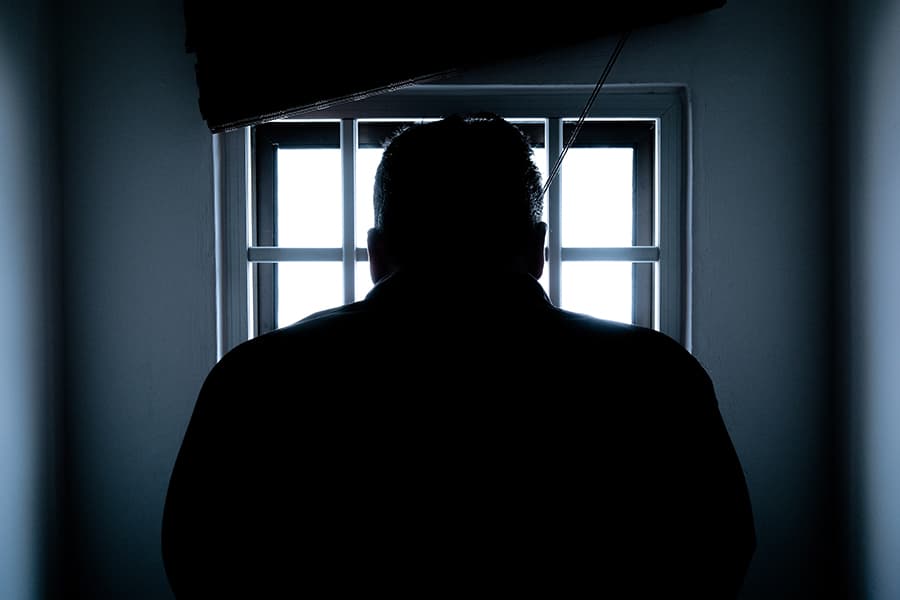

Re-Thinking “Don’t Blame the Victim”
In the mid 1990’s, I took on debunking the myth that all victims are always innocent and invited people to re-think the then prevalent belief in the dictum, “Don’t Blame the Victim.” While some victims are truly innocent (e.g., abused children) others thrive on being victims. The victim’s stance is a powerful one and was erroneously framed as: The victim is always morally right, neither responsible nor accountable, and forever entitled to sympathy. That perception has since changed to some degree, I am pleased to say.
The heart that goes out
To the victim
Is the heart that extends its sight
To see the victim as a powerful creator:
Both hurt
And with might
Debunking Myth: Dual Relationships are Unethical
In the mid 1990s, I stepped into the ring to dispute the whole notion of the so-called depravity and danger of dual relationships in psychotherapy and counseling and, through my writing and teaching, emphasized the importance of healthy connections and community. In 2002, I co-authored, with Dr. Arnold A. Lazurus, a break-through book, Dual Relationships and Psychotherapy, on the eponymous subject.
The health of one heart
Connected to another
Is an indisputable core
As we gather
Strength in community

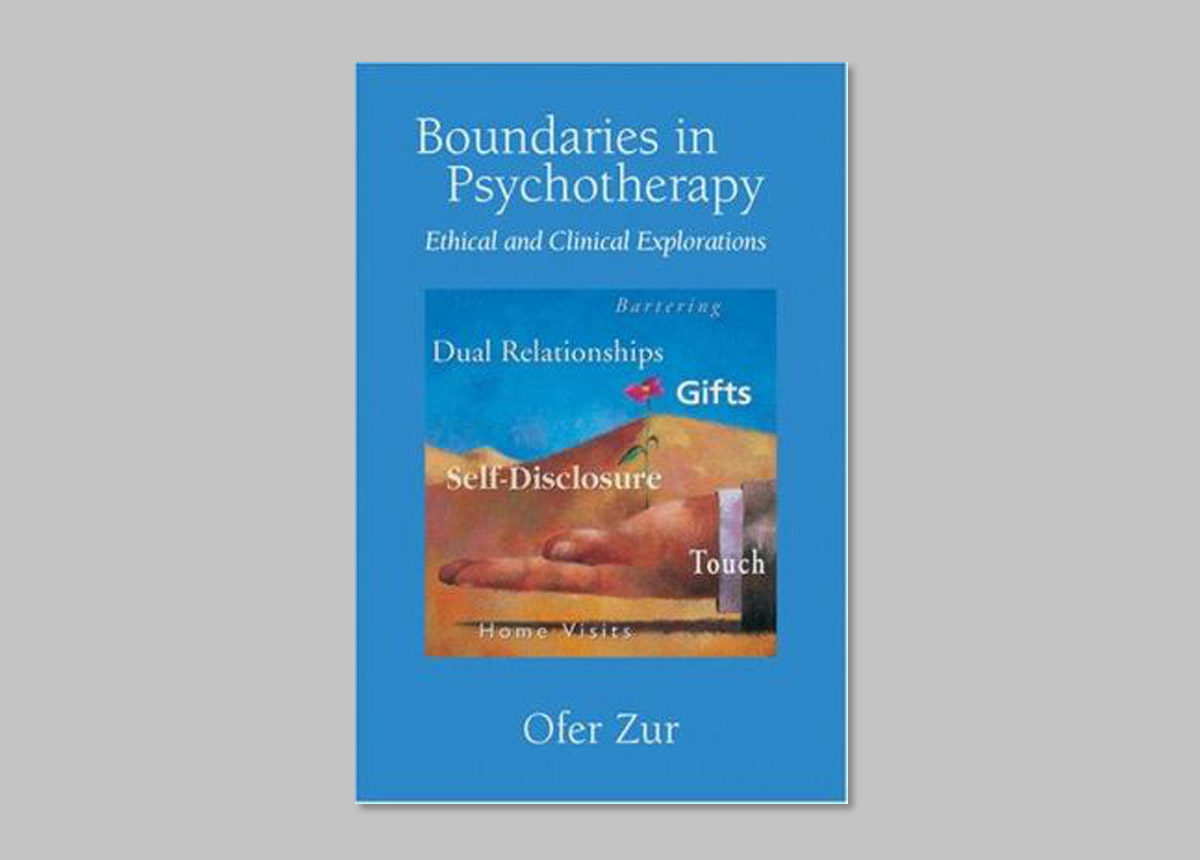
APA DID Publish my Boundaries Book
In 2007, the American Psychological Association published my book on Boundaries in Psychotherapy which invites therapists to be more flexible in regard to issues, such as touch, multiple relationships, gifts, home visit, bartering, and self disclosure. This also signified that psychology, as a result of the relentless work of a few colleagues and myself, now embraces a more flexible and context-based view of therapeutic boundaries.
And where does flexibility go
When we flex our muscles
To forbid the flow
Of connection?
Risk of Risk Management — Re-Thinking Care
So-called risk management ‘experts’ have in effect hijacked parts of the fields of general medicine, including mental health, by inducing exaggerated fears of lawsuit. Some of risk management’s standard, yet unfounded, instructions in psychotherapy have been: Never touch a client, don’t self-disclose, don’t leave the office with a client, and don’t engage in any form of dual relationship. These overly cautious ‘defensive medicine’ practices, often perpetuated by purported risk management experts and attorneys, can actually hurt clients, as they in effect deny them adequate focus on effective patient care. In my article on the Risk of Risk Management I document how, even though the healing benefits of touch, therapist self-disclosure, or meeting clients where they feel most comfortable or safe have been scientifically documented in the last 50+ years, many poorly trained and frightened psychotherapists regularly avoid doing what is therapeutically right and helpful out of regulatory fear.
One of my clients was a gentle, pleasant older man in his 50’s, suffering from paranoid schizophrenia, with whom I worked in the East Coast. As part of therapy, I was continually in touch with his parents, his three children and sisters, as well as his landlord, employer, psychiatrist, and everyone else involved in his life. He happened to be a Starsky and Hutch TV show ‘junky’ who closely identify with the show and even drove a car that mimicked the signature car of the show. My curly dark hair reminded him of Starsky—in fact, at times, he confused me with the character. So it came to be that his car was the ‘office space’ where we met for most of our weekly therapy sessions. He never liked my office—being there made him nervous, frightened, paranoid and withdrawn—but he felt relaxed, engaged, and receptive while tooling around town with me in his signature car. As we cruised, like in the TV series we checked out the hotspots, all the while talking about the client’s relationships, dreams, fears, and work. He felt safe going into the stores to do basic shopping, knowing that Starsky was ‘backing him up’ from the car. As I described in my Ethical Eye article, several ethicists and attorneys warned me of the dangers of leaving the office or being involved in what they labeled as a dual relationship. After consulting with several ‘true’ experts, I decided to continue my approach to therapy with this client, for the simple reason that it was effective. At all times I reminded myself that I was being paid to help him, not to practice defensive medicine.
And then there is fear…
Don’t get near
Don’t touch
Often means don’t hear
The boundaries are made clear
Yet I am here
for you…


Out-of-office Experiences (aka OOE)
As previously discussed, the adoption of rigid risk management practices has taken a serious toll on client care in the medical field in general as well as on mental health services. In the following I want to hone further in on the ill-advised rule ‘never leave the office with a client.’ This rather irrational ‘one size fits all’ dictum bears the consequence that mental health services are denied to the agoraphobic, the paranoid, and the millions of home-bound patients. It equally interferes with treatment for ‘side-by-side’ (rather than face-to-face) oriented clients who could benefit from a walk on a local trail rather than the standard face-to-face mode in the office. Equally, it denies services to disorganized, homeless, or poor clients who are not capable of finding their way to a therapist’s office.
I have incorporated Out-of-Office Experiences (aka OOE) into my therapeutic practice by making perfectly legitimate, clinically sound visits to home-bound or hospitalized patients, as well as conducting sessions with the mentally ill homeless at street corners. I met with one highly distrustful and resistant adolescent client on the basketball court after he refused to show up at the office. My approach—meeting him, a dedicated athlete, on his turf—provided a good context for connection, particularly since this was also my game! With this tactic I succeeded in gaining my client’s trust and, most importantly, engaging him in psychotherapy (albeit somewhat unorthodox!). An older, rather depressed and isolated old lady with three beloved dogs, from whom she would not separate, refused to come to my office due to her dogs, but agreed to a walk-and-talk session on a nearby trail. She was also a ‘side by side’ kind of a woman.
Other legitimate contexts for disregarding risk management’s arbitrary injunctions against interaction outside the office include: engaging in adventure/outdoor therapy; going on a therapeutically initiated tour with an architect client to her newly designed house pursuant to the therapist’s helping her find her ‘voice’ via architecture; attending the funeral of a client at the request of the spouse whom the therapist has seen in couples therapy intermittently for 20 years; or attending a theatrical performance of a young client whom the therapist has successfully helped to overcome shyness and stage fright.
Let us be in the air
Let us exit the walls of rules
Let us actually share
A true moment with each other
Educate the Profession About the Value of Flexible Boundaries
My clinical work has been enhanced by my education, as well as my various life experiences, whether living with the Masai in Kenya, mixing with the English in London or living among Israelis and Americans. Consistent with my beliefs as expressed in my writing, when clinically appropriate I have made home visits, attended the weddings of couple/clients, conducted therapy in nearby parks, appropriately self-disclosed, given supportive hugs when needed, and bartered with cash-poor, talented artist clients. I have learned from my patients, not only how to live with dignity, but also how to die with dignity. Living in a small town, I was inevitably, exposed to a wide range of unavoidable dual or multiple relationships.
In the multiple universes we each are
Transmitting and receiving
Being close and far
Offering each other the one thing that matters
Dignity of heart
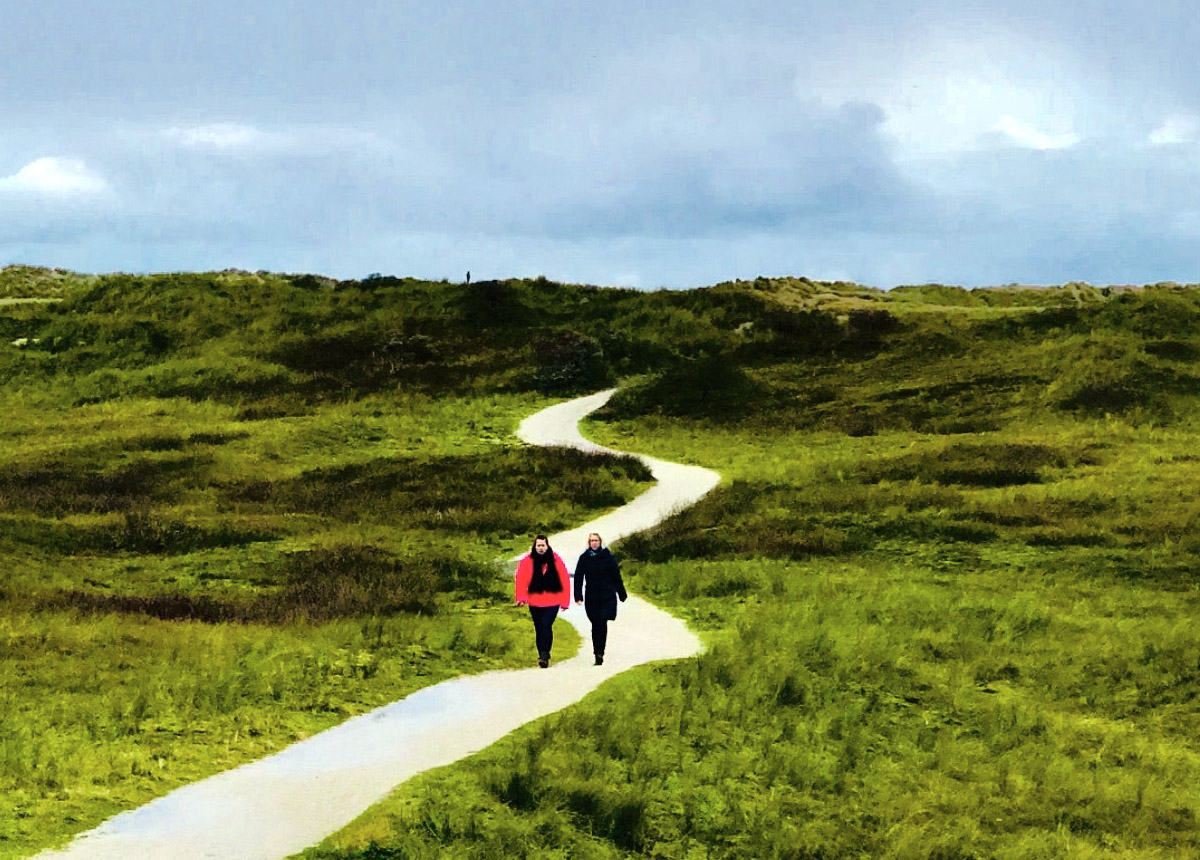

Is it Ever Ethical for a Psychotherapist to be Naked with a Client: On Unavoidable Multiple Relationships
Moving to the small town of Sonoma, CA in the 1990’s was an eye-opening experience in regard to dual or multiple in a small community. Soon after I opened my private psychotherapy practice, I got a call from a couple who sought couple therapy. When I asked them how they got my name, the husband told me that he played basketball with the local old-men league and he liked the “ferocious” way I played. The wife added that she was on a field trip with our 1st grade daughters and witnessed me impressively helping a group of 1st grade girls negotiate a heated disagreement. As they shared their familiarity with me, I readily recalled my graduate school, ethics and risk management instructors warning us repeatedly that, in the words of K. P., one of the most renowned ethicist psychologist at the time “. . non-sexual dual relationships, while not unethical and harmful per se, foster sexual dual relationships.” When I inquired with top ethicists and risk management experts whether it is ethical or advised to see the couple in therapy, they unanimously warned me that dual relationships are unethical and likely to lead to sex. I wondered if they were concerned that I would have sex with the husband, the wife, or perhaps, with both at the same time 😋.
Early on in my residence in the town of Sonoma, I stepped out of the shower stall in the only gym in town, realizing that I was standing naked next to one of my clients. I had heard similar experiences from therapists who served on military bases, aircraft carriers or retreat centered,
These experiences and many similar others, led me to study the faulty beliefs about dual relationships, to publish articles, authors books, teach hundreds of workshops, consult with hundreds of therapists, testify in licensing board hearings and in civil lawsuits on the myth that all dual relationships are unethical and to expose the fact that dual or multiple relationships are unavoidable in certain settings, such as military, prisons, small and isolated communities and, in some situations, positively contribute to the therapeutic process.
Fears lead to fears
A path often trodden
By those afraid
Of being naked with the truth
5 Forms of Guilt
The following are my thoughts on the different types of guilt and some of the ways in which I have experienced guilt. These are less obvious forms of guilt and go beyond lack of guilt (psychopathy) and excessive guilt (depression, anxiety, suicide, etc). As would be expected, by the age of 71, I have experienced most forms of guilt.
1. Appropriate Guilt: This type of guilt is an appropriate response to, or regret for, what we have come to understand, acknowledge or admit that we have done something wrong, unjust or immoral, or feel remorse for what we have not done. In my own life, I regret some of the ways I endangered others with the way I rode my motorcycle or shot the light bulb in the bunker, what I did or did not do in war, or was insensitive to friends’ needs.
2. Catholic Guilt – Religious Guilt: This kind of guilt is religion-induced that does not differentiate ones thoughts from their actions. Besides the Catholic church, other Christian denominations also believe people should confess to ‘sinful’ thoughts, yearnings or desires even when no actions were taken. Similarly, the ultra orthodox Jewish religion makes no distinction between ‘sinful thoughts’ and ‘sinful acts.’ I have experienced this kind of guilt as a young man when I felt guilty for internally reacting disproportionately with extreme anger.
3. Survival Guilt: This kind of guilt primarily manifests in people who have survived a life-threatening situation, such as battles during war or car accidents where others died or were severely injured. They often believe they could have done more to save the lives of others even if they could not. I have definitely felt this kind of guilt in relation to fellow soldiers who died or were heavily injured in military operations I was part of.
4. Neurotic – Toxic guilt – Persecutory guilt: This form of guilt is derived from a sense of not being a good–enough person, feeling like a failure who deserves to be punished. Persecutory guilt is a form of self-inflicted punishment
5. Existential guilt: This type of guilt can seem free-floating or unrelated to any particular situation. It is about one’s sense of accomplishment or success in addition to an awareness of the inequalities and injustices that exist in the world, such as a family member or community of people who are less capable or less fortunate than you are, or the fact that there may be people starving in Africa, or that the whales are dying off due to over hunting, pollution and other factors. When a person asks themselves “Am I doing enough to help others or help the world?” I have definitely experienced this kind of guilt combined with deep concerns for the underprivileged people worldwide, victims of unjust war, and disappearing species around the world.
The Coronavirus Pandemic exemplifies a variety of feelings of guilt that are the result of the fact that billions of people are unemployed, locked at home, or struggling with food needs, yet ‘you’ still have a job or can provide for your family. People may feel guilty because their children can’t see friends and grandparents or participate in normal activities. Perhaps someone they care for has been ill with COVID-19 or they feel guilty because a loved one has died all alone (‘coronavirus way’), and they couldn’t be there to say goodbye.
An emotion we perfected as human beings
Guilt
Is built
On so many lies
We tell ourselves
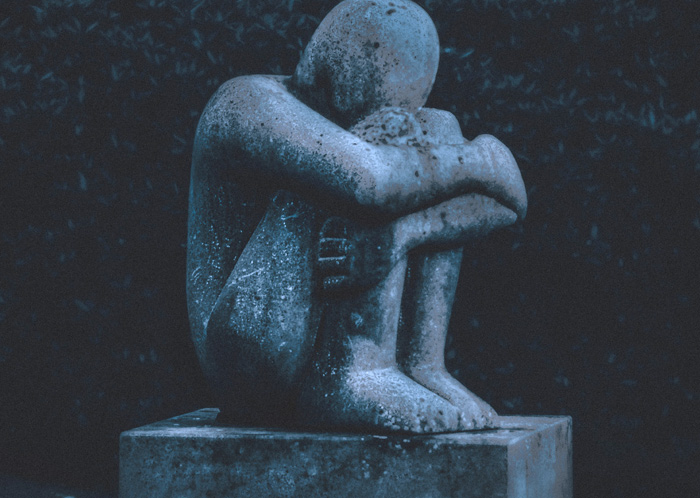

Not All Affairs Are Created Equal
Infidelity, unlike what most people assume, is neither rare, an exclusively man’s doing, nor the likely end of the marriage. Almost a third of all marriages may need to confront and deal with the aftermath of extramarital affairs. Women, men, gay, straight, young and old, all seem to be somehow engaged in affairs. Online affairs have become extremely prevalent. Marriages can get stronger when couples deal constructively with the affair. See: Infidelity & Affairs: Myths, Facts & Ways to Respond
Types of Affairs:
| 1. Conflict Avoidance | 8. Unsatisfactory Marriage |
| 2. Intimacy Avoidance | 9. Exit Affairs – Jumping off point |
| 3. Individual Existential/Developmental crisis | 10. Long Term Parallel Lives |
| 4. Sexual Addiction – Sexual Obsession | 11. Online (Most prevalent) |
| 5. Accidental – Brief – One Time Affairs | 12. Cyber Affair w/ a Sex-Robot |
| 6. Philandering | 13. Consensual |
| 7. Retribution |
Myths and Facts:
Myth: An affair inevitably destroys the marriage.
Fact: Many marriages survive affairs and many emerge stronger from the infidelity crisis.
Myth: Infidelity is rare in the animal kingdom.
Fact: Only 3% of the world’s 4,000 species of mammals are pre-programmed for monogamy.
Myth: Infidelity is rare and abnormal in our, and most other, societies.
Fact: Men’s infidelity has been recorded in most societies.
Myth: Society, as a whole, supports monogamy and fidelity.
Fact: Society gives lip service to monogamy/fidelity, but actually supports affairs. (i.e. Ashley Madison)
Myth: Men initiate almost all affairs.
Fact: Infidelity has become an equal opportunity issue in the West.
Myth: An affair always means there are serious problems in the marriage.
Fact: Research has shown that some of those who engage in affairs reported high marital satisfaction.
Myth: Infidelity is a sign that sex is missing at home.
Fact: Some unfaithful spouses have reported increased marital sex during the period of their affair.
Myth: Infidelity always has to do with a bad marriage or a withholding partner.
Fact: There are many reasons that people may choose to have an affair.
Myth: Full disclosure of all the details of the affair to the betrayed spouse is prerequisite to healing.
Fact: Giving the uninvolved partner all the X-rated details of the affair can be traumatizing.
Myth: Extramarital affairs are never consensual.
Fact: Open marriages used to be popular in the 1970s and are still around.
An affair to remember
An affair to forget
Between all the taboos
We met
For a moment of truth
Evacuation Wonders: What I wish to be burned away or give ‘fire’ to
Evacuation orders were inching in. The cellphone text alerts gradually progressed from “Evacuation Advisory” to “Evacuation Mandatory.” In between, there was enough time to consciously or unconsciously, wittingly or unwittingly contemplate the evacuation ‘wonders,’ considerations and choices:
The first set of questions were obvious:
Q: What do I take? — What is dear to my heart?
A: Our dog & cats, cell phone, laptop, passport, etc.
Q: What is OK to leave?
A: The remainder of my physical possessions
Q: What do I wish I could take but forego for lack of space in my car?
A: Photo albums, some nostalgic old clothing, and a unique collection war propaganda.
The second set of questions were more complex:
Q: What did I wish the fire would burn away?
A: I wished to toss into the fire my petty desires for comfort, my impatience, my attachment to being someone who changes the world, and my ego identification in my accomplishments. Then, also my huge collection of hard copy academic articles and books (so that my study could transform to a sacred meditation space).
Q: What was the most ridiculously absurd thing I took with me?
A: Alas, my attachments to my ego’s accomplishments. I recognize that without an ego at all, one can’t do much in life. So I suppose I needed my ego to navigate the evacuation journey!
Q: What would I like for the fires to give energy to or fuel growth in?
A: Many things! I would like to add energy to the fires of my desire to continue to learn and grow, to ‘do good,’ and to serve social justice. I’d like to fuel my passion to serve the greater good in psychological health through fighting the unnecessary dogmas of the therapy profession; and for my mission to challenge unexamined beliefs and myths. I’d like to energize my empathetic caring for family members, friends, colleagues and strangers in need; my capacity to focus on what gives me meaning and joy; and my ability to contemplate and meditate.
I wished a fire would burn away my impatience
the relentless notion to challenge faulty beliefs
I longed for tranquility,
for the seeds of reflection & meditation to be planted,
scattered then, throughout my body and my mind
A new perspective had been sown,
a wish for calmness, stillness, a peaceful existence
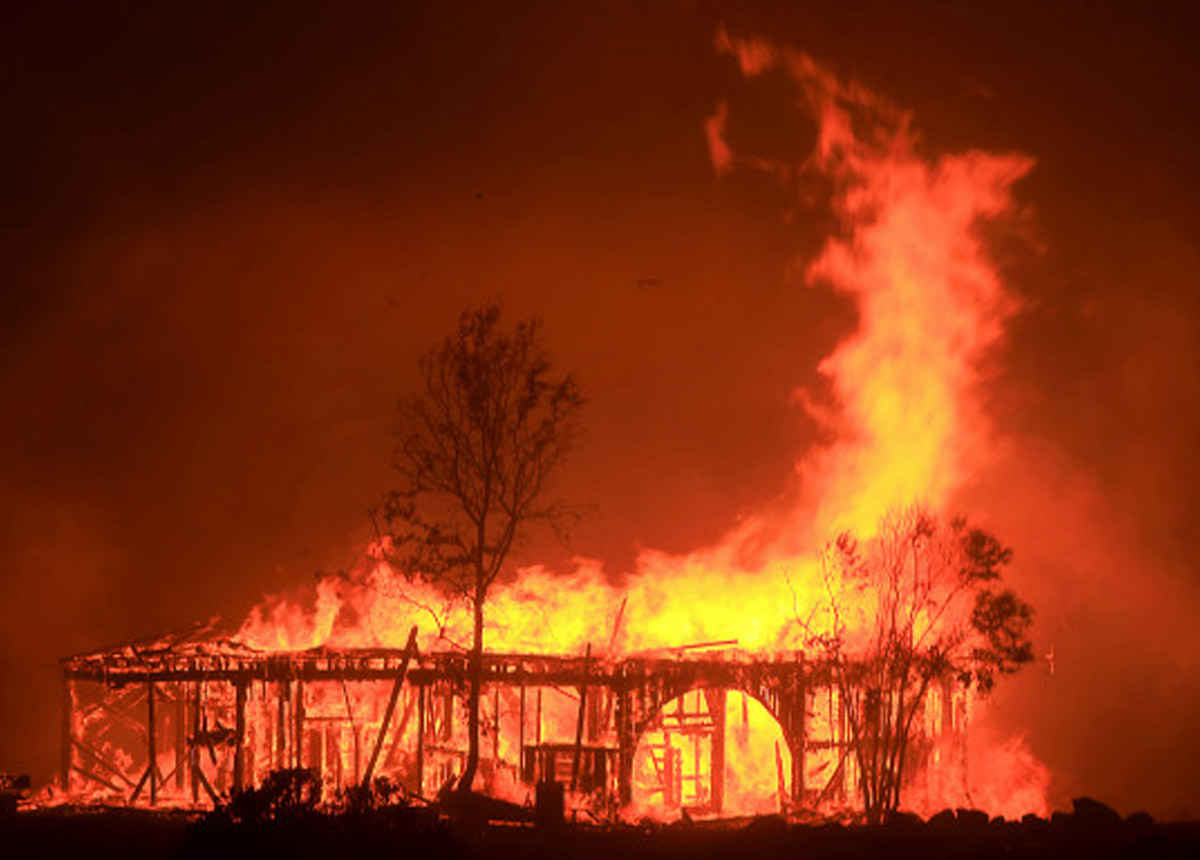

On Critical Thinking: Exploring Politically and Professionally Incorrect Myths & Faulty Beliefs
Whether in psychology, oceanography, chemistry, limnology, or on ‘hot’ topics such as gender, race, victims or war, I have devoted a big part of my life to exploring the ‘given’, the unexamined truths, and often, the politically incorrect beliefs. The Following are some samples of the faulty beliefs I have challenged (and links to my writings on each topic):
- “Don’t Blame the victim” – Victims are 100% innocent
- Marital affairs are rare & signify that the marriage is ‘in trouble’
- The Myth of the “Warrior and the Beautiful Soul“: Unlike men, who are inherently warlike, women are innately peaceful
- Humans are inherently peaceful – Wars have no appeal
- Death is a failure and should be avoided at all cost
-
Oceanography is useless for fish farming and limnology is clear about the importance of mosquito larvae for fish ponds
- Blackouts are no good and to be avoided at all costs
- When in doubt, follow your instinct
- Myths & Faulty Beliefs in Psychotherapy & Counseling:
- Touch in psychotherapy is likely to lead to sex
- Therapists are always more powerful than their clients
- Once a client, always a client
- Dual or multiple relationships in psychotherapy are unethical
- You are one Borderline (BPD) away from losing your license
- The DSM (Diagnostic Statistical Manual) is scientifically based
- Risk management is at the heart of the standard of care
- Boundary crossings inevitably lead to boundary violations
The unexamined truths
Is a desert territory
Which I like to roam
With my heart
Therapists (& General Public) Beware: You Are One Borderline (BPD) away from losing your license
In my forensic/expert witness practice I have encountered the most fascinating, colorful and intriguing cases where BPD (Borderline Personality Disorder) clients have gotten their (otherwise solid, competent and ethical) therapists to behave in ways they regularly wouldn’t such as giving them money, regularly texting with them at 1 or 2 in the morning, doing drugs with them, moving in with them, wearing their clothes, even adopting them, and, of course, having sex with them.
This dynamic is often present in the BDP’s personal, intimate, familial and vocational life and can also occur with psychotherapists or counselors.
Without a doubt, it is a therapist’s responsibility to maintain clinically appropriate boundaries with all clients. However, that is not always easy when it comes to BPD clients, especially for therapists who are either new to the profession or not experienced with these clientele. Clients with BPD are extremely unstable and are so desperate for connection that their fierce need can draw a therapist in. At the same time, many BPD clients have learned not to trust those very attachments they demand and crave. Thus, therapists can find themselves caught in their BPD clients’ conflicting desires. Therapists and others the borderline is in contact with will often accommodate, give in, support, yield to no-end in order to avoid the “borderline” rage.
Borders
Hold the promise and the risk
Of what’s beyond them
Tempting and threatening
They allure the best of us

Expert Witness & Ethics Consultant
Serving as an Expert Witness in administrative licensing board hearings and in civil lawsuit trials has been an exciting and invigorating experience for the last 30+ years, as I have been able to shed light on numerous misconceptions and errors in understanding the standard of care, the importance of context, and, of course, boundaries, such as dual relationships, physical (non-sexual) touch, gifts, home visits, sessions taken place outside the office, and bartering. The explosion of TeleMental Health in 2020 has also been the focus of many of my depositions. On a weekly basis, I provide phone or zoom consultations for therapists all over the US (and abroad) on standard of care, context and boundaries.
They asked:
‘How do you dare?’
when I broke convention
to practice care…


Challenging Encounter with Fear, Mastery and . . . PIRANHAS on the Amazon River
In 2022 at 72 years old, I have decided to confront fear, challenge, and adventure by going to Brazil and spend time in gorgeous, adventurous Rio de Janeiro, on the magnificent enormous Amazon River and encounter unique personal challenge with the legendary dangerous awesome Piranhas.
I travelled in this 3 weeks adventure with my beloved nephew, Tal (52) and a young friend Jenn Gaskell (32) a Scottish doctorate-mathematician, and ultra marathon runner.
One more frontier
To travel to
To face fear
To experience pain
As gateway to eternity
A short video of our delightful time in Rio, Santarem and the gorgeous Amazon
Rio
The city that never sleeps
Majestic, draped in a rainbow of colors
The heartbeat of life
The soul of Brazil


A short video and 6 slides of my amazing encounter with the awesome piranhas and the rational for this rather ‘crazy adventure’
Piranha’s song for my 73rd birthday
Piranha
Our first encounter
Your sharp famous teeth
a reminder of your legendary power
My eagerness to engage
Middle Finger
In an interesting follow up of my challenging trip to Mongolia in 2024, the Mongolian psychologist-colleague who invited me to present in the capital to Mongolian psychologists sent me the following image. Being funny and truthful, she noted, “This flower reminds me of you”, referring to me flipping my middle finger in response to so many faulty beliefs and damaging dogmas generally in our world and, more specifically, in psychological ethics.
A gift from a Mongolian psychologist-colleague via an image,
I was compared to not a rose but to a cactus,
prickly, extending the middle finger
in defiance of dogmas in psychology,
to faulty beliefs in general, damaging dogmas,
irreverence for the proclaimed reverence.

Theme #2: Military Experience
Theme #3: My Family & My Health
Theme #4: Questioning Authority, Challenging Accepted Truths & Debunking Myths
Theme #5: Psychology of war – The Love of Hating
Theme #6: Adventures & World Wide Travel
Theme #7: On Good Rules & Bad Rules: Pushing the Limits & Freedom Seeking
Theme #8: My Moral Junctions
Theme #9: Looking at Death Straight in the Eyes
Theme #10: Professional Psychology, Zur Institute & Professional Achievements
Theme #11: On Men, Women, Gender Role and Gender Relationships
Theme #12: At 70’s: Next Mountains to Scale
Theme #13: Amazement! I am still here
 Before exploring ‘life after leaving,’ I want to revisit my time in Israel in the early 70s as an officer in the Israeli army. Our highly trained unit was stationed in a tremendously overcrowded, poverty-stricken, and polluted refugee camp in the occupied Gaza Strip. The camp consisted of thousands of single-story houses jammed full with multiple generations in families, and often chickens and ducks as well! The narrow streets—actually muddy alleyways—emitted the foul stink of urine and excrement from donkeys, mules, chickens, ducks and… humans.
Before exploring ‘life after leaving,’ I want to revisit my time in Israel in the early 70s as an officer in the Israeli army. Our highly trained unit was stationed in a tremendously overcrowded, poverty-stricken, and polluted refugee camp in the occupied Gaza Strip. The camp consisted of thousands of single-story houses jammed full with multiple generations in families, and often chickens and ducks as well! The narrow streets—actually muddy alleyways—emitted the foul stink of urine and excrement from donkeys, mules, chickens, ducks and… humans. I despised myself for not protecting this woman and her children, for not standing in front of the Israeli bulldozer the way the heroic ‘Tank-Man’ stood in front of the tanks in Tianaman square in China.
I despised myself for not protecting this woman and her children, for not standing in front of the Israeli bulldozer the way the heroic ‘Tank-Man’ stood in front of the tanks in Tianaman square in China. I was living in Jerusalem studying chemistry and oceanography at the Hebrew University, towards my B.Sc. degree in 1973. My home was situated in the beautiful old compound of the Coptic Church on the tiny, historical Ethiopian Street in West Jerusalem. Riki (not her real name) was a delightful, energetic, intelligent, and life embracing cousin whom I met for the first time when we both were 23/24 years old. As we got to know each other, we became aware of plenty of musical, social, moral and political shared interests as well as a budding mutual sexual attraction.
I was living in Jerusalem studying chemistry and oceanography at the Hebrew University, towards my B.Sc. degree in 1973. My home was situated in the beautiful old compound of the Coptic Church on the tiny, historical Ethiopian Street in West Jerusalem. Riki (not her real name) was a delightful, energetic, intelligent, and life embracing cousin whom I met for the first time when we both were 23/24 years old. As we got to know each other, we became aware of plenty of musical, social, moral and political shared interests as well as a budding mutual sexual attraction.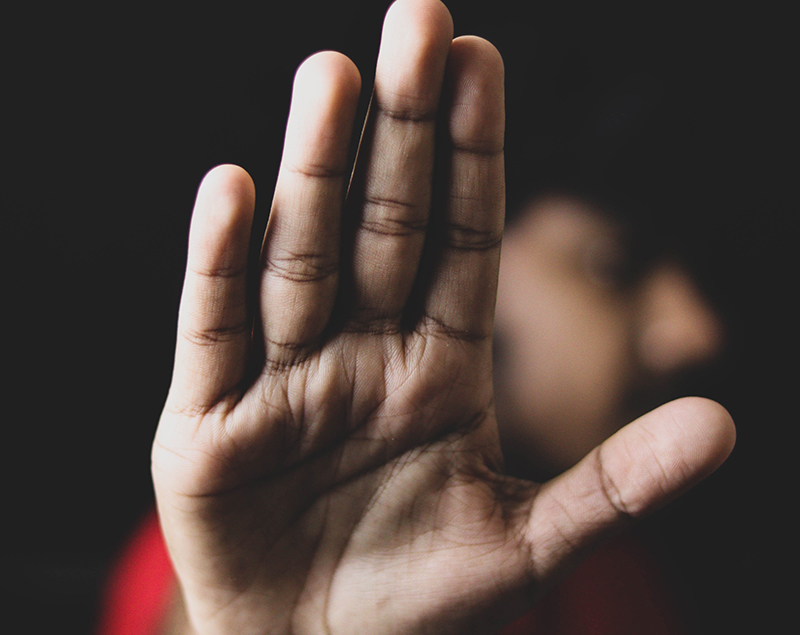 As Riki and I explored the construct of incest further we realized that, indeed, most human cultures have some rules or norms that forbid close or blood relatives from engaging in sex or marriage, making such relationships a taboo. The Incest Taboo is often framed in a ‘nature or nurture’ debate, wherein a cultural application to the taboo explains biological preference for partners who do not share genes. Another explanation for the taboo is an inborn aversion to genetic effects of inbreeding, like congenital birth defects. The incest taboo also seems to exist to prevent social role confusion or conflicts (and abuse) within a family, particularly regarding parent-child and sibling relationships.
As Riki and I explored the construct of incest further we realized that, indeed, most human cultures have some rules or norms that forbid close or blood relatives from engaging in sex or marriage, making such relationships a taboo. The Incest Taboo is often framed in a ‘nature or nurture’ debate, wherein a cultural application to the taboo explains biological preference for partners who do not share genes. Another explanation for the taboo is an inborn aversion to genetic effects of inbreeding, like congenital birth defects. The incest taboo also seems to exist to prevent social role confusion or conflicts (and abuse) within a family, particularly regarding parent-child and sibling relationships.